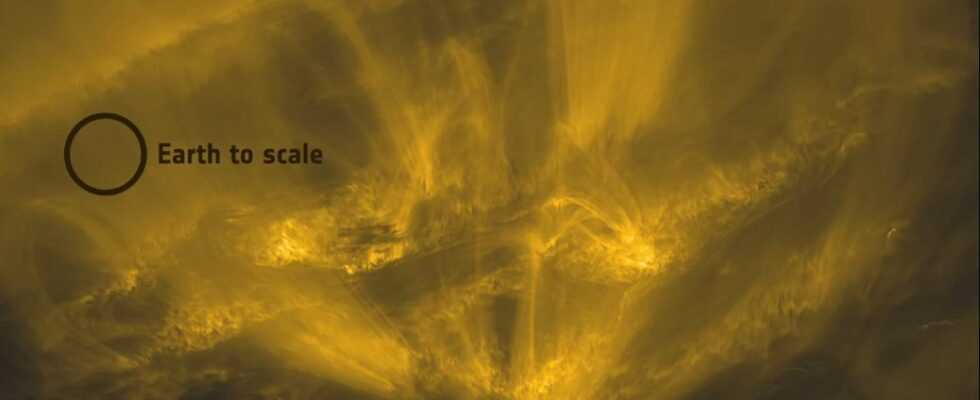On March 26, Solar Orbiter approached our star, all its instruments lit. The occasion of an impressive scientific harvest, with absolutely incredible published images.
Solar hedgehogs, eruptions, first observation of the South Pole… And this is only the beginning! Solar Orbiter should be able to do even better.
Study the nearest star
It was the first “close perihelion”, the moment when the probe passes closest to the Sun in its orbit, since its gravitational assistance last November. 45 million kilometers from our star all the same, but only a third of the Earth-Sun distance (0.32 AU). This may seem like a lot, and it is true that other probes approach it closer: this is the case of the American probe Parker, or BepiColombo which approaches Mercury.
But these probes put practically all their instruments “in the shelter” behind imposing heat shields… Where Solar Orbiter uses measuring, optical and spectroscopic instruments, pointed directly at the surface of the Sun. The result is staggering, and each time Solar Orbiter gets closer, the discoveries go hand in hand.
Closer, even closer!
This is the case with this “solar hedgehog”, captured by the EUI instrument (Extreme Ultraviolet Imager) and colorized to fit the human eye. This formation, about 25,000 km long, shows hot gas peaks (about one million degrees Celsius) alternating with other colder peaks.
This is the first time that a “hedgehog” has been detected, and scientists will try to understand what leads to its formation and evolution. The Belgian researcher David Berghmans, scientific manager of the instrument, explains on this subject: ” Even if Solar Orbiter shut down tomorrow, I’d be busy for years trying to figure it all out. », which reveals the richness of the measures.
In addition to these “close-up” sequences, the probe took exciting images of the solar south pole. With its orbit which will be increasingly inclined over the years (until 2027), Solar Orbiter will gain a very favorable inclination to observe the two solar poles. But at 9° inclination, it is already the best existing image of the South Pole! It looks a bit like a threatening storm.
Auspicious measures
Finally, let’s not forget one of the main scientific objectives of Solar Orbiter and its ten instruments, that is to better understand the mechanisms between the events observed directly on the “surface” of the Sun, and those measured in located several million kilometers away.
For this, the probe also embeds instruments such as the RPW (Radio and Plasma Waves) that measures particles in the environment that Solar Orbiter passes through. For now, the mission is gathering a lot of data, and scientists are delighted, especially in French laboratories, which are involved in six of the 10 instruments.
Source : CNES

6